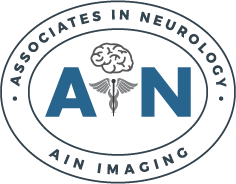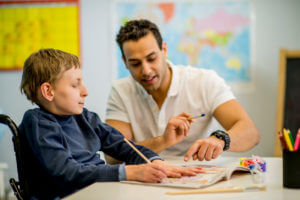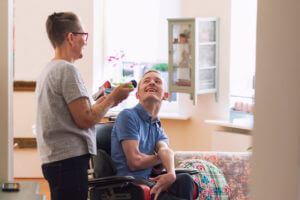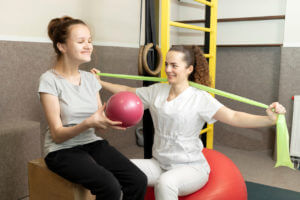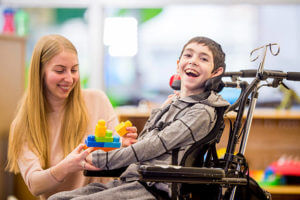Lack of mobility and muscle strength can be a huge obstacle for individuals with cerebral palsy. This neurological disorder, which affects movement and coordination, can greatly impact day-to-day activities such as walking, writing, and even sitting up straight. While there is no cure, there are various cerebral palsy treatment options available that focus on improving
Read MoreCerebral Palsy treatment In Howell MI
Speech and Language Therapy for Cerebral Palsy
Speech disorders are common in individuals with cerebral palsy. This is why speech and language therapy for cerebral palsy is a necessary and highly valuable intervention. Speech and language therapy targets the challenges in communication that accompany cerebral palsy. The goal is to enhance the individual’s ability to express himself or herself. In this article,
Read MoreSpeech Therapy for Cerebral Palsy: Communication Strategies and Techniques
Cerebral palsy is a neurological disorder that affects muscle coordination and body movement. It is caused by brain damage before, during, or shortly after birth. Though primarily known for its impact on the ability to move muscles properly, cerebral palsy can also make it difficult to speak or communicate clearly. When it comes to overcoming
Read MoreAddressing Communication Challenges in Cerebral Palsy
Cerebral palsy (CP) is a neurological disorder that affects sensory and cognitive development. Two areas individuals with cerebral palsy can have difficulties with are movement and communication. Therefore, there are physical and communication challenges in cerebral palsy. Communication is a fundamental aspect of human interaction, and finding effective ways to communicate can significantly enhance the
Read MoreAssistive Technology for Cerebral Palsy: Tools for Independence
Cerebral palsy is a neurological disorder that can make individuals who have been diagnosed with it experience challenges with relation to movement and communication. People who have cerebral palsy often need assistance with everyday tasks, which means a lot of them are unable to live independently. However, with the help of assistive technology, individuals with
Read MorePhysical Therapy for Cerebral Palsy: Improving Mobility and Function
Living with cerebral palsy can present unique challenges, especially when it comes to mobility and function. However, physical therapy has proven to be a valuable tool in improving the quality of life for individuals with cerebral palsy. Through targeted exercises and therapies, physical therapists can help enhance mobility, reduce pain, and increase independence. Let’s dive
Read MoreUnderstanding Cerebral Palsy: Causes, Types, and Treatment Approaches
Cerebral palsy (CP) is a neurological condition that can affect movement, coordination, and muscle tone or posture. The condition is the most widespread motor disability in childhood and is thought to affect between 5,500 and 13,100 children in the U.S. each year. While CP is a lifelong condition, early intervention and appropriate management can significantly
Read MoreHow to Choose the Right Cerebral Palsy Treatment Plan
Cerebral palsy refers to a group of conditions commonly occurring in children and affecting their movement, posture, and muscle coordination. In the United States alone, of every 1000 kids born every year, between one and four have cerebral palsy. Here are some tips for choosing the right cerebral palsy treatment plan for your kid and
Read MoreCerebral Palsy Treatment and Therapy – What Parents Need to Know
Cerebral palsy, or CP, is a group of conditions that affect movement, posture, and muscle coordination. While there is no cure for CP, proper treatment and therapy can help a child achieve their full potential. As a parent, navigating the different types of treatments and therapies can be overwhelming. Let’s learn more about cerebral palsy
Read MoreReasons to Consider Cerebral Palsy Treatment
Cerebral palsy is caused by damage to the brain before birth that affects movement, coordination, and muscle tone. Patients diagnosed with this condition are young, experience difficulty with mobility, and often need lifelong support. It is one of the leading causes of childhood disability in the United States. With the right treatment, however, patients with
Read More